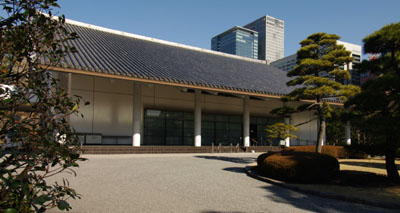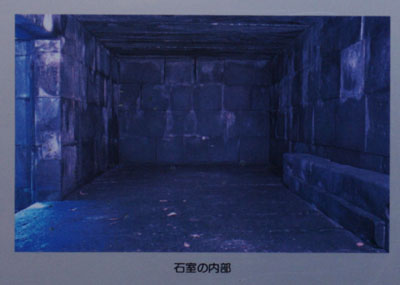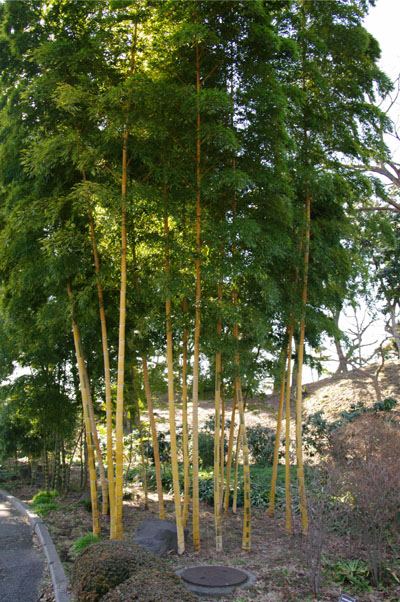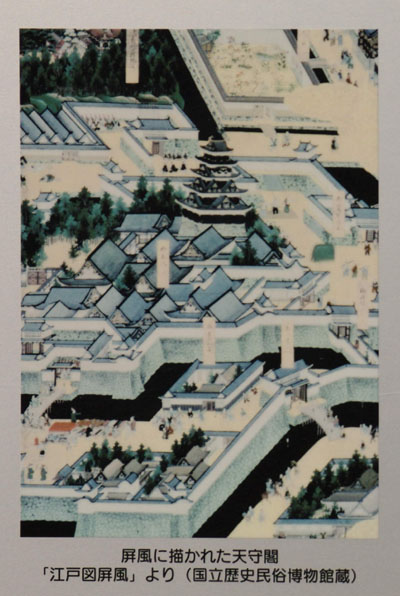|
|
|||||
 |
|
The Edo Castle was the residence of the Tokugawa shogun who ruled Japan from 1603 to 1867. Emperor Meiji also resided there from 1868 to 1888 before moving to the newly constructed Imperial Palace. The East Garden of the Imperial Palace are the former site of the Edo Castle's innermost circles of defence which were made up of the Honmaru (the main circle) and the Ninomaru (the secondary circle). None of the original main buildings of the Edo Castle remain but there are the moats, walls, entrance gates and several guardhouses. This page and the next describe, with photographs, the visit I made to the East Garden in February 2012. Obviously the garden was not in bloom in February but it is a very interesting place and a full day goes by most pleasantly (usefully there are several places throughout the garden where refreshments are available). Very helpfully the Imperial Household Agency make available a map and brief guide to help the visitor. There is a useful and informative map to be found here. This page describes my wanderings from entering at the Ote-mon Gate past the Fujimi-Yagura to the Kitahanebashi-mon Gate. The next page describes returning to the Ote-mon Gate via the Shiomi-zaka slope and past the Ninomaru Grove. |
|||||
|
I took the Metro to Otemachi Station and then walked to the Ote-mon Gate, this is the gate together with the bridge over the moat and a section of the wall. |
|||||
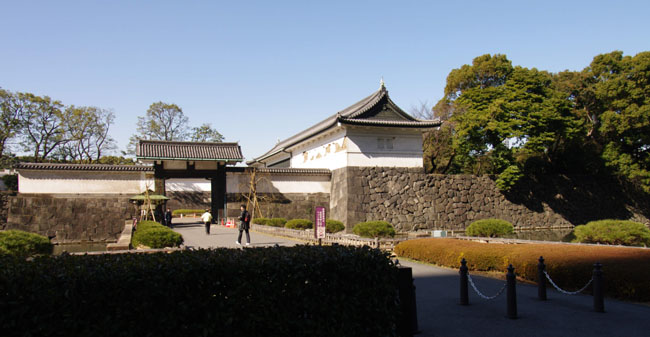 |
|||||
|
The moat as seen from the bridge leading to the gate. |
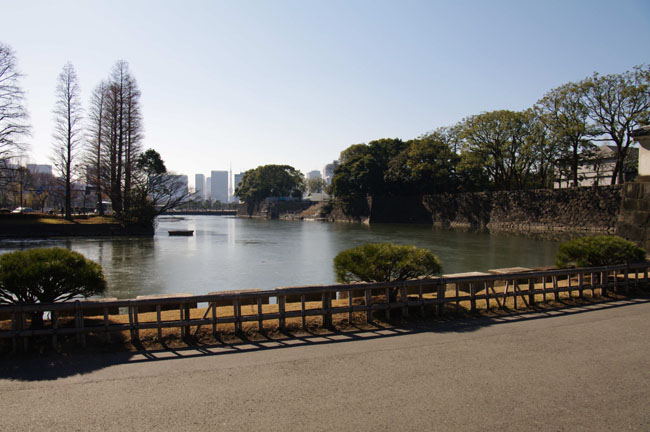 |
|
If you look back as you go through the gate you can see you are just a short distance from the modern Tokyo. |
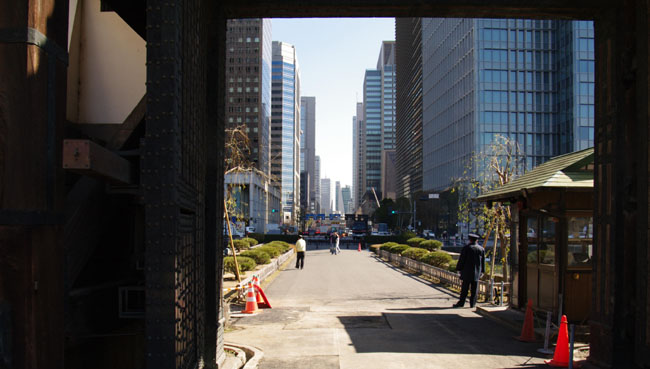 |
|
|
|
Continuing on you pass the Doshin-bansho Guardhouse built to house the Samurai guardsmen who kept a 24-hours per day watch on all persons who entered through the Ote-mon Gate. |
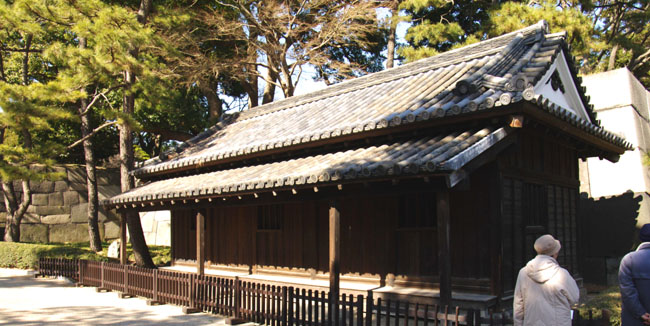 |
|||||
|
After the guardhouse a typical stretch of the internal fortifications can be seen as the path curves to the left and enters a wide courtyard. |
|||||
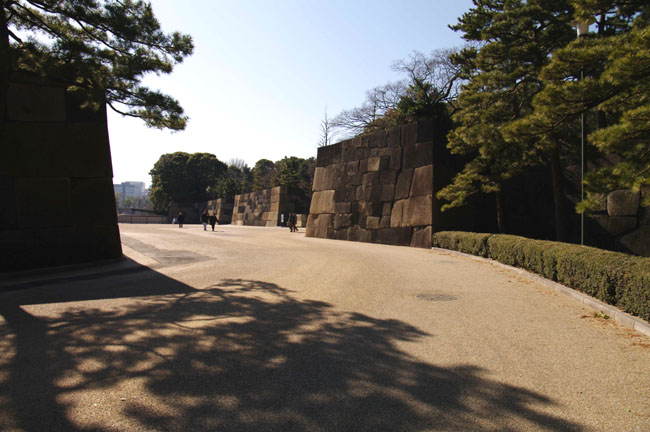 |
|||||
|
Two path can be seen as breaks in the wall on the right of this courtyard area(originally there would have been more gates there). As you enter the courtyard there is a second guardhouse, the Hyakunin-bansho Guardhouse, on the left. |
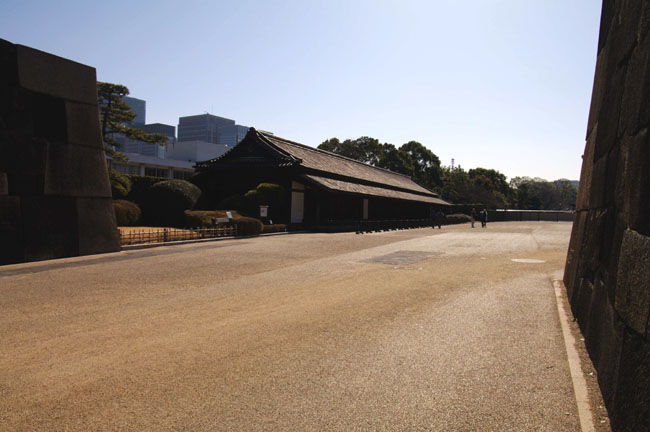 |
|||||||||
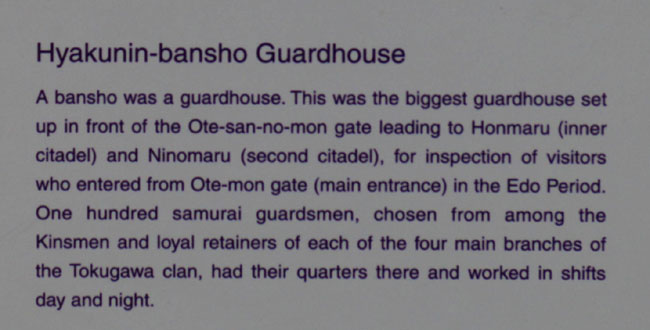 |
|||||||||
|
The left hand gap in the wall (with your back to the Hyakunin-bansho Guardhouse) takes you along a rising and curving path between protective walls towards the site of the former Chujku-Mon Gate. |
|||||||||
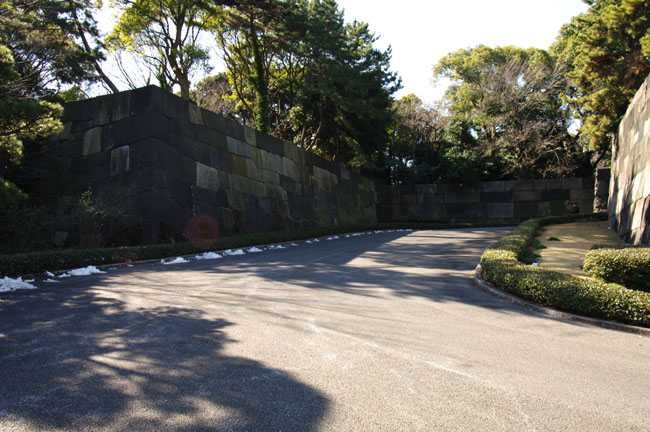 |
|||||||||
|
This is the site of the former Chujku-Mon Gate. If you look carefully in the middle at the bottom of the photograph there is the mounting for the gate pivot. This photograph also shows more detail of the construction of the wall. |
|||||||||
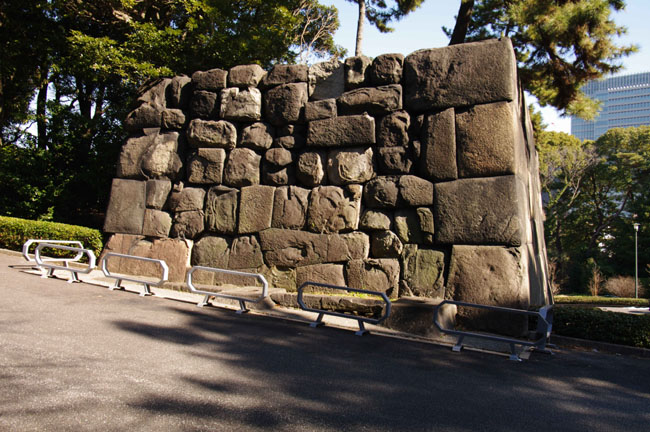 |
|||||||||
|
Following the path as it curves up the slope into the honmaru you encounter (on the left) the Fujimi-Yagura (Mt Fuji Viewing Tower or Keep - so called because at one time Mount Fuji could be seen from here). |
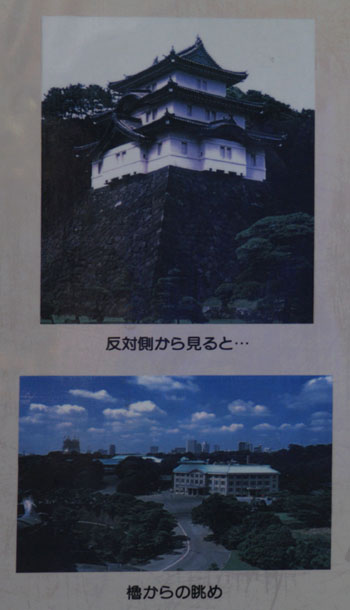 |
|||||
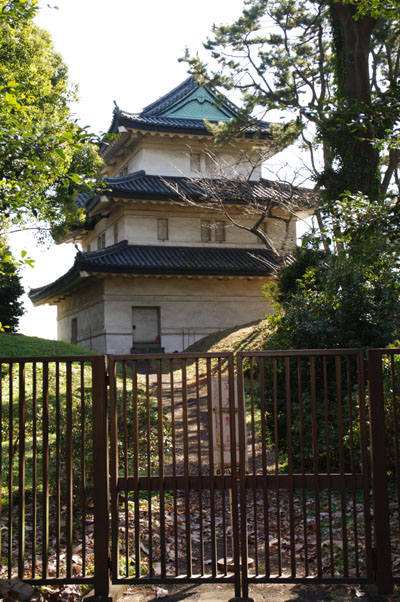 |
|||||
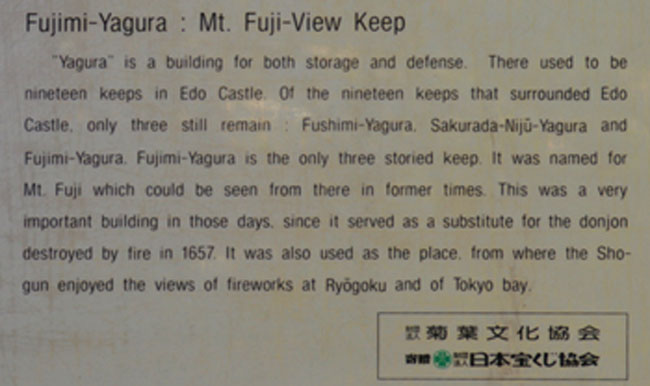 |
|||||
|
Once you reach the top of the slope the whole garden opens out in front of you. The next two photographs are various views of the garden. |
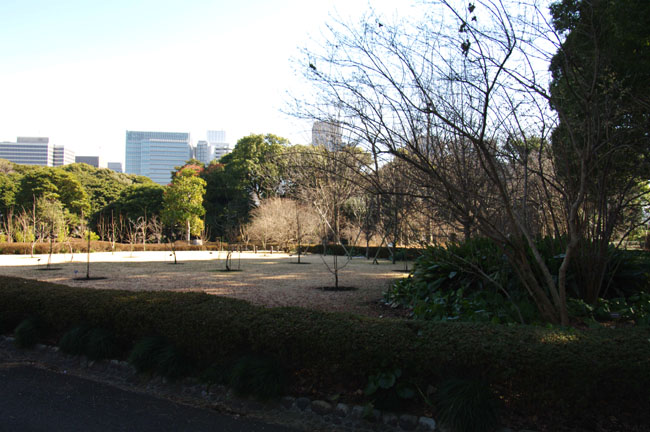 |
|||
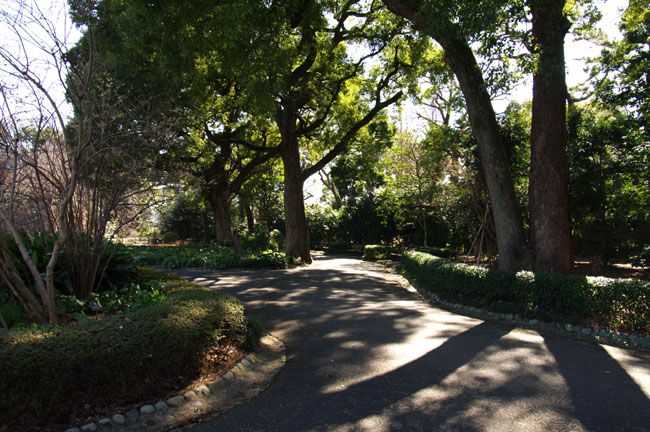 |
|||
|
And this is a view of the Honmaru Oshibafu (or Lawn), unfortunately not very green at this time of year. |
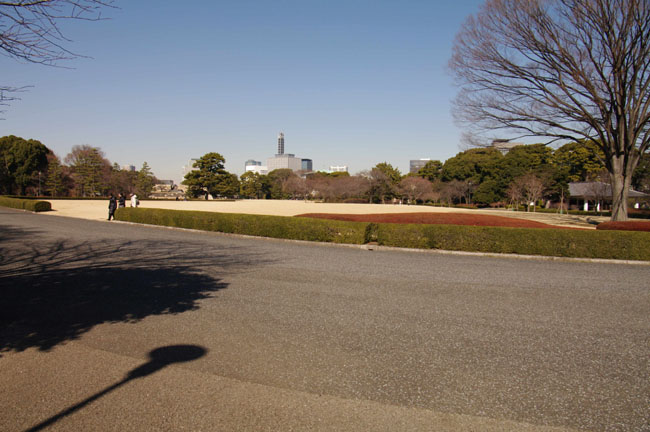 |
|
Following along the path you come to the Ishimuro (or Stone Cellar). |
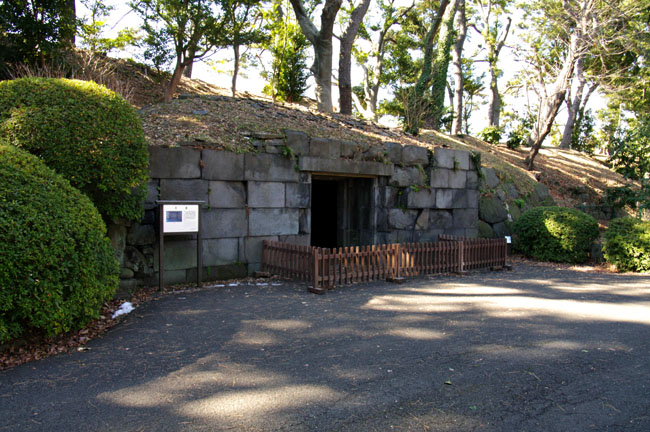 |
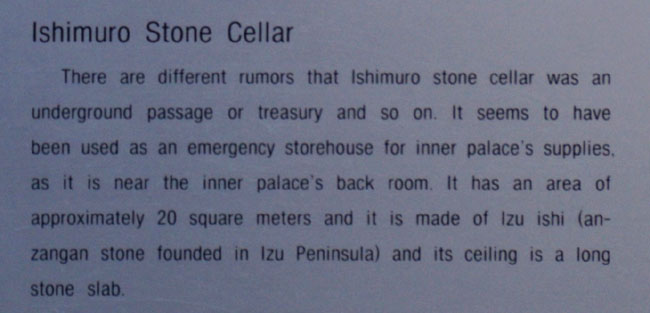 |
|
|
|
|
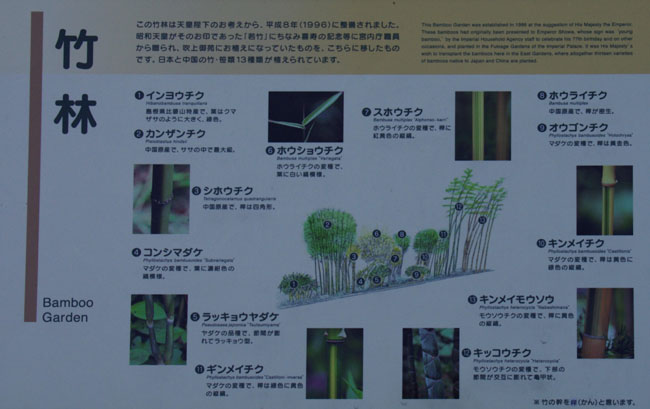 |
|
Shortly after the Bamboo Grove you leave the narrow paths that wind through the garden area and enter an open space with the remains of the Tenshudai Donjon (Main Tower or Keep) in front of you. |
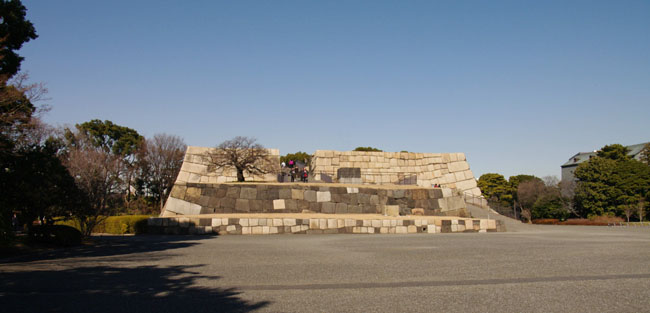 |
|
|
|
The remains of the Tenshudai Donjon make a magnificent viewing platform as shown below. The lawns are on the left and the garden area including the Stone Cellar on the right. |
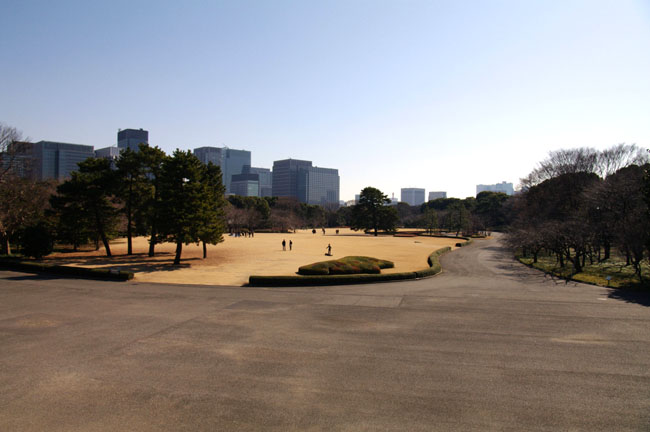 |
|||||||
|
The Tenshudai Donjon also provides an excellent view of the Tokagakudo Concert Hall. The photograph does not do justice to just how brightly coloured it is. The pictures and data from the information board are below the photograph. |
|||||||
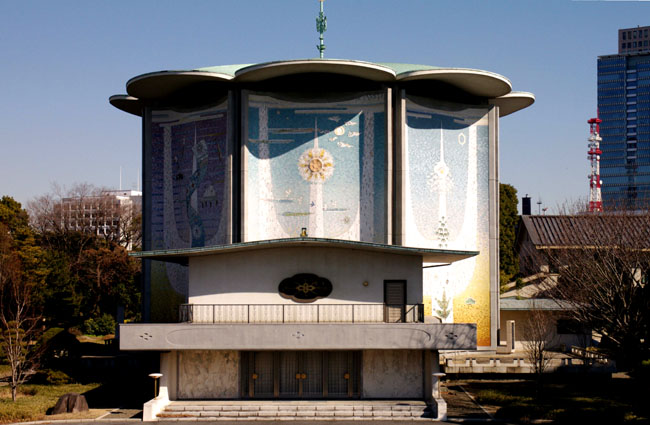 |
|||||||
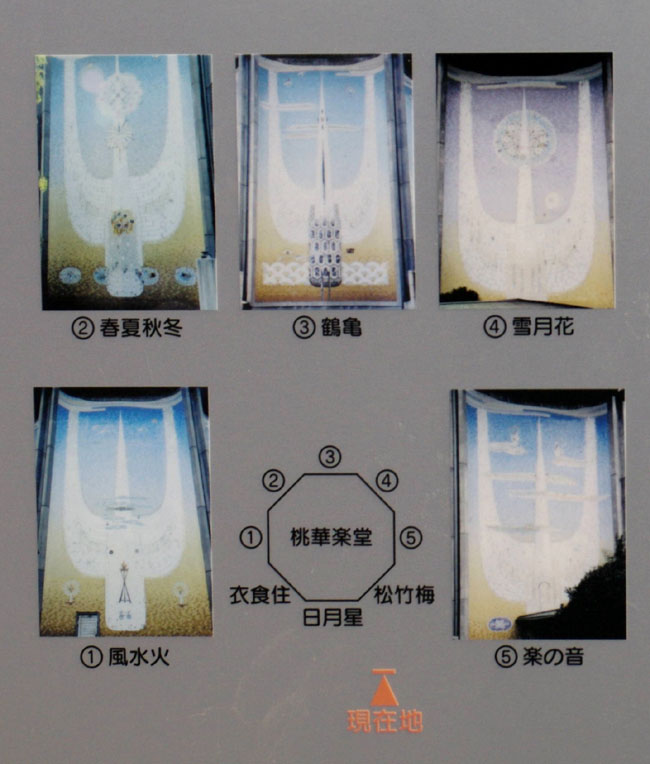 |
|||||||
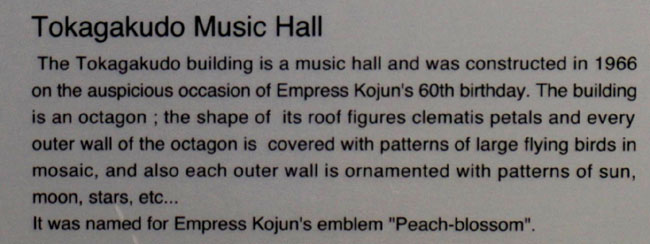 |
|||||||
|
The first stage of my exploration of the East Garden ended at the Kitahanebashi-mon Gate which once lead to another part of the Edo Castle. That area now forms Kitanomaru Park which I visited on another day. |
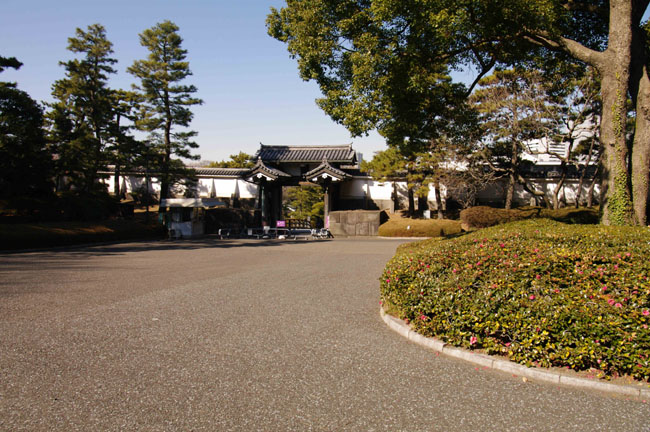 |
|
Continue exploring the East Garden of the Imperial Palace |
|||
|
Go to top of page |
|||
| [New Wildwood] [Contents] [Route 66] [Western Odyssey] [South East USA] [Round the World] [Why Wildwood?] [Site Status and News] |
